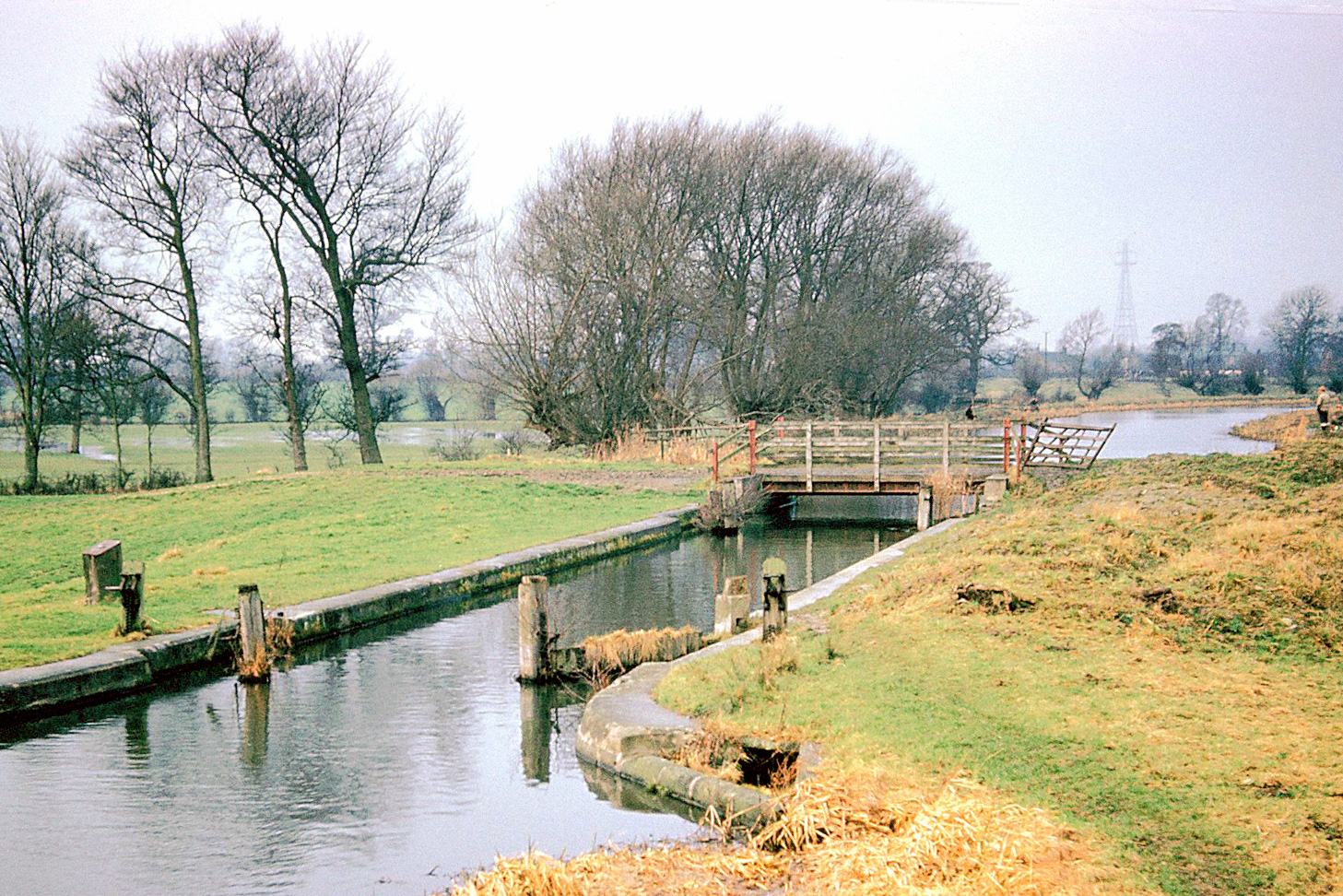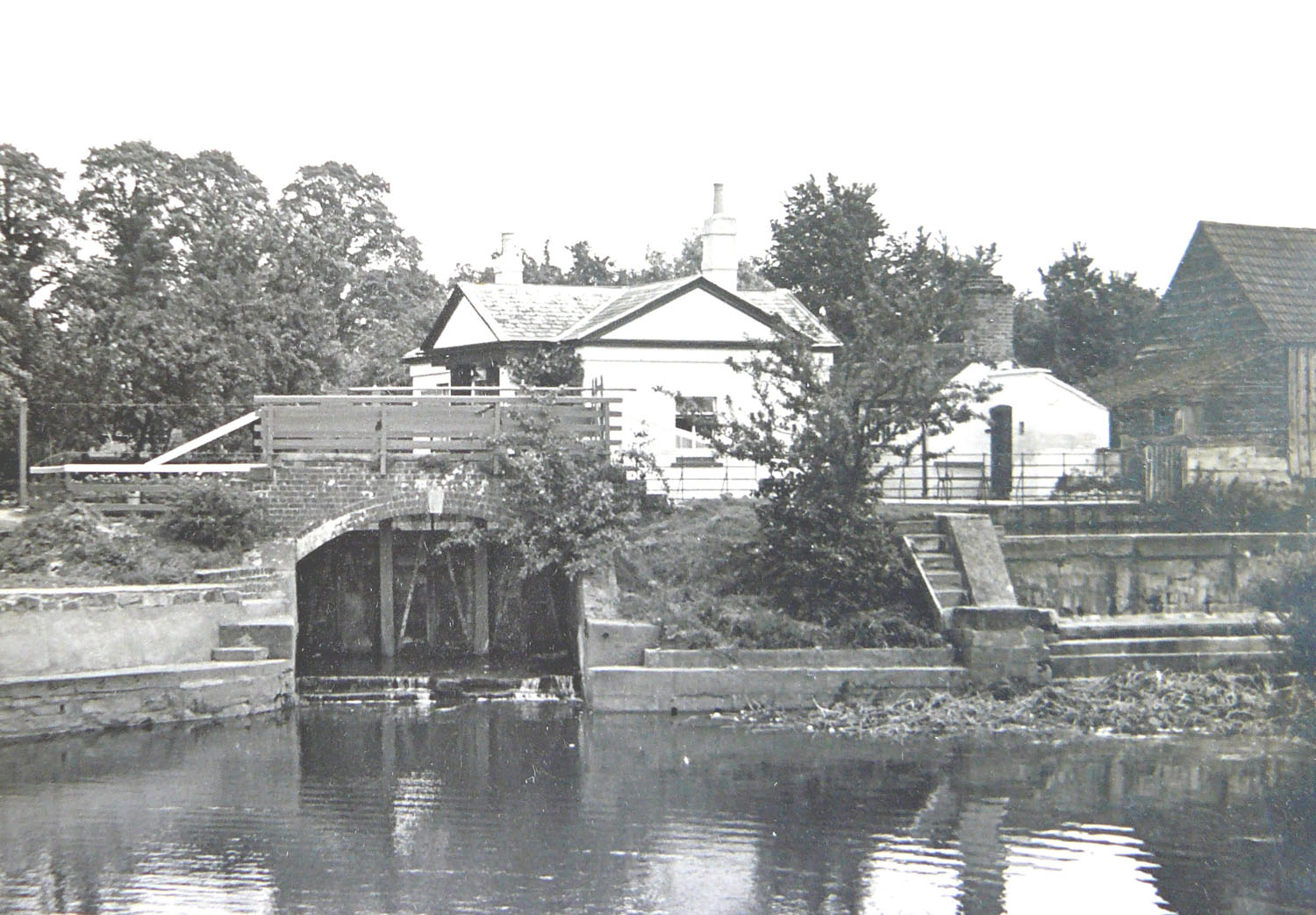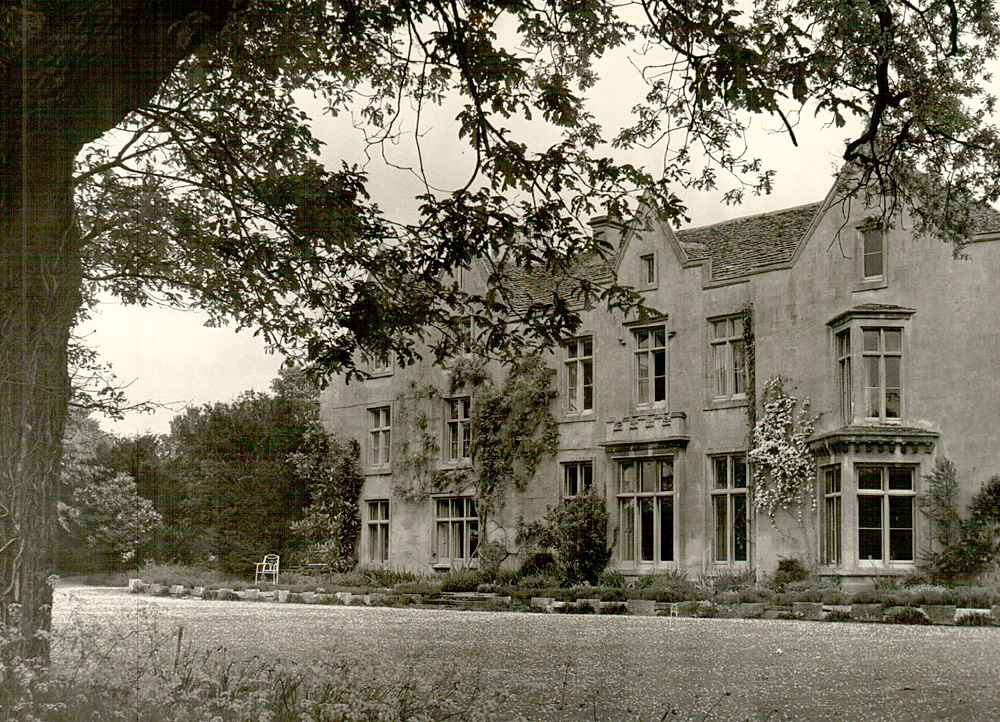The change in level at the lock became only a few inches to suit the new Gloucester ship canal.


In the 1820s, the pound below the lock had to be raised about five feet to match the level of the new Gloucester ship canal, and Whitminster Lock then had a rise of only a few inches. It was often referred to as Shallow Lock, and in due course, all of the gates were left open.
Towards the end of the nineteenth century, there were occasional difficulties maintaining the level of the Gloucester ship canal. The corresponding drop in the Stroudwater level caused some heavily laden barges to ground in the pound above the lock. So in 1904, the lock was made effective again by raising the walls and gates by eight inches and raising the banks of the pound above to suit.
After the canal closed, Cotswold Canals Trust volunteers carried out some restoration work in the 1990s.
The bridge at the tail of Whitminster Lock gives access to the low-lying fields to the south, and it carries the towpath across the canal. After the canal closed in 1954, the former swing bridge was replaced by a fixed structure.


Behind a hedge to the north-east of Whitminster Lock is the site of Whitminster Mill. It had enhanced power because the river above it was embanked well above the valley floor. In the late eighteenth and early nineteenth centuries, it was used for paper-making and for grindin corn.
After the Gloucester ship canal opened in 1827 and a dispute about water being taken from the River Frome in 1833, the Gloucester company bought the mill and its water rights and closed the mill down.
The mill building was replaced with a cottage for the weir-keeper, which became the prototype for the bridge keeper’s cottages on the Gloucester canal.


A drive leaving the road at Walk Bridge is a permissive path to the parish church passing Whitminster House.
For a few years in the 18th century, the house was home to the poet Richard Owen Cambridge who made big improvements to his estate, helped by using barges on the River Frome. He later moved to Twickenham where he mixed with other poets such as Alexander Pope and Jonathan Swift.
For problems with Shallow Lock and raising the level of the pound above, see D1180/9/23
For the history of Whitminster Mill, visit https://www.british-history.ac.uk/vch/glos/vol10/pp294-296.